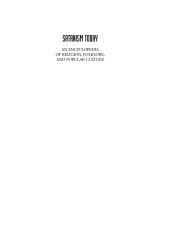I. VAMA MARGA Foundations Of The Left-Hand Path - staticfly.net
I. VAMA MARGA Foundations Of The Left-Hand Path - staticfly.net
I. VAMA MARGA Foundations Of The Left-Hand Path - staticfly.net
Create successful ePaper yourself
Turn your PDF publications into a flip-book with our unique Google optimized e-Paper software.
present in most religions – has led to a proliferation of sects, of which the<br />
Tantric left-hand path is only one of the best known outside of India.<br />
Although Tantra in the West is commonly thought to be synonymous with<br />
sex, erotic rites actually form a very small part of the vast tapestry of Tantric<br />
practice. <strong>The</strong> respected Tantric authority Agehananda Bharati has pointed out<br />
in his <strong>The</strong> Tantric Tradition that only seven percent of Tantric material is of a<br />
sexual nature. In fact, sexual magic and erotic mysticism is almost<br />
exclusively the province of the relatively small number of left-hand path<br />
Tantric adepts.<br />
<strong>The</strong> fallacy that the entirety of Tantra partakes of the sinister sexual<br />
rites of its Vama Marga was current in the Western world as long ago as<br />
1914, when Arthur Avalon (Sir John Woodroffe) felt compelled to write in<br />
his introduction to the Tantratattva that this particular Tantric text "may have<br />
proved a disappointment to those who, at the mention of Tantra, always<br />
expect to hear of rituals with wine and women, the midnight circle (Cakra),<br />
black magic in the cremation grounds, and so forth." <strong>Of</strong> course, our attention<br />
will be unabashedly focused on these little understood activities. However,<br />
these are solely the ways of the minority left-turning path. <strong>The</strong>y are not<br />
practiced in the much broader body of the Tantric tradition as a whole, which<br />
is primarily of the right-hand path.<br />
31<br />
This more widespread right-hand path of Tantra, the Daksini Marga,<br />
is by far the most socially acceptable of the two paths, as it abjures the<br />
physical sexual rites and taboo-breaking intrinsic to the left-hand path,<br />
utilizing primarily intellectual and symbolic means of initiation. Furthermore,<br />
the right-hand path emphasis on the male principle is less controversial in<br />
patriarchal Asian countries traditionally oppressive of women. <strong>The</strong> Vama<br />
Marga, devoted to erotic initiation through the feminine as both eternal,<br />
spiritual entity and physical, sexual being, is dewed as much more heretical<br />
by ordinary Hindus and Buddhists.<br />
<strong>The</strong>re is not simply one unambiguous reason why the left-hand path<br />
was given that name; the answer to this question is split into several layers of<br />
physical, semantic and religious meaning. Like many Sanskrit words, vama<br />
can be translated to mean many different things – there are at least four<br />
relevant definitions that concern us. By merely examining the different strata<br />
that can be read into its name, most of the essential principles of the left-hand<br />
path can be observed. In this sense, the very phrase Vama Marga is a coded<br />
magical communication, a symbolic sigil or mantra revealing its own essence<br />
to the magician who unlocks its message. <strong>The</strong> fact that the phrase itself can<br />
impart so much of the initiatory approach unique to the left-hand path may<br />
account for its potent durability and appeal, even among those who have<br />
never looked beyond its surface.<br />
First, let us consider the two Sanskrit phrases that are commonly<br />
translated into English as "left-hand path." <strong>The</strong> eldest of these two terms is<br />
Vama Cam, literally the left way. <strong>The</strong> (relatively) more recent Vama Marga<br />
simply means the left path; the "hand" appears to have been added by later<br />
Western interpreters, although it has now become generally accepted, even in<br />
India. In fact, Vama Cara is often used interchangeably with Vama Marga,<br />
although for clarity's sake we will stick to the latter phrase throughout this<br />
book. <strong>The</strong> essential root of both is vama, most often interpreted as meaning<br />
"left".<br />
<strong>The</strong> Sinister Direction<br />
... beware of the left, the cult of Shakti.<br />
—James Joyce, Ulysses<br />
<strong>The</strong> leftwardness of the left-hand path is such a seemingly obvious part of<br />
our subject that it's often simply overlooked or taken for granted. But every<br />
once in a while, we have been asked, "So, why is the left-hand path left<br />
anyway?" Like many an apparently easy question, the answer is surprisingly
















